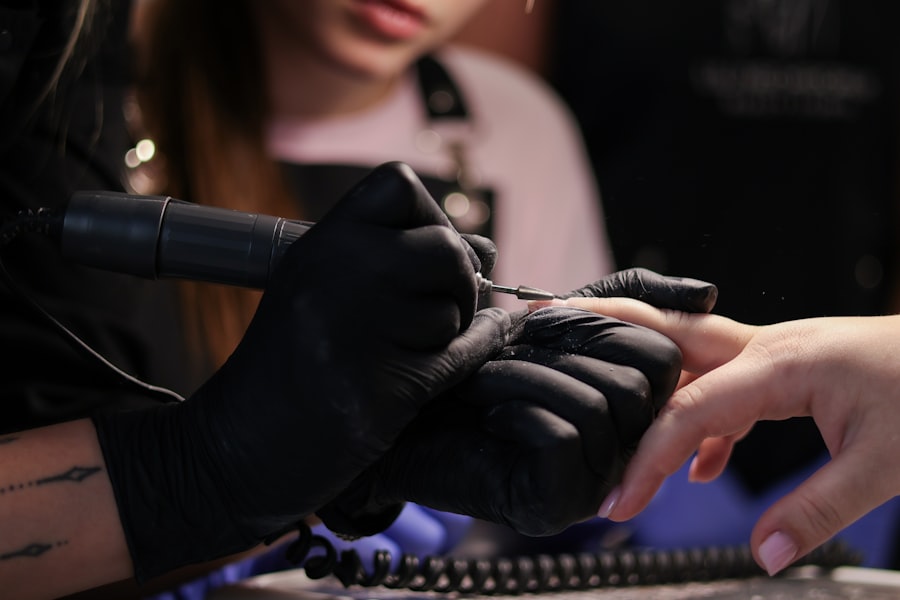When you consider laser hair removal, it’s essential to grasp how the process works. At its core, laser hair removal utilizes concentrated beams of light to target and destroy hair follicles.
This method is particularly effective for individuals with darker hair and lighter skin, as the contrast allows the laser to focus more effectively on the hair without affecting the surrounding skin. However, advancements in technology have made it possible for people with various skin tones and hair colors to benefit from this treatment. Before you embark on your laser hair removal journey, it’s crucial to understand that multiple sessions are typically required for optimal results.
Hair grows in cycles, and the laser is most effective during the active growth phase. Therefore, you may need to schedule several appointments spaced weeks apart to ensure that all hair follicles are treated effectively. During your initial consultation, your practitioner will assess your skin type, hair color, and overall health to create a personalized treatment plan tailored to your needs.
This thorough understanding of the process will help you set realistic expectations and prepare for what lies ahead.
Key Takeaways
- Laser hair removal targets hair follicles with concentrated light to inhibit future hair growth
- Shave the treatment area before the session and avoid sun exposure and tanning products
- Use gentle cleansers and moisturizers, and avoid exfoliating or irritating the treated area
- Manage discomfort with cool compresses and over-the-counter pain relievers as needed
- Shield the treated area from sun exposure with clothing or broad-spectrum sunscreen
Preparing for Post-Laser Care
Following Professional Advice
Once you’ve undergone laser hair removal, preparing for post-laser care is vital to ensure the best possible outcome. Your skin may be sensitive and slightly irritated following the treatment, so it’s essential to have a plan in place to care for it properly. One of the first steps you should take is to follow any specific instructions provided by your practitioner. They may recommend avoiding certain products or activities that could exacerbate irritation or lead to complications.
Soothing Your Skin
In addition to following professional advice, you should also stock up on soothing products that can help calm your skin after treatment. Look for gentle moisturizers or aloe vera gel that can provide relief from any discomfort you may experience.
Hydration is Key
Hydration is key; keeping your skin well-moisturized can aid in the healing process and minimize any potential side effects. By taking these proactive steps, you can set yourself up for a smoother recovery and enhance the effectiveness of your laser hair removal treatment.
Post-Treatment Skincare Routine

Establishing a post-treatment skincare routine is crucial after undergoing laser hair removal. Your skin will likely be sensitive, so it’s important to choose products that are gentle and non-irritating. Start by cleansing your skin with a mild, fragrance-free cleanser to remove any impurities without causing further irritation.
Avoid using exfoliants or harsh scrubs for at least a week after your treatment, as these can aggravate your skin and hinder the healing process. Moisturizing should be a key component of your post-treatment routine. Opt for a hydrating lotion or cream that contains soothing ingredients like hyaluronic acid or chamomile.
These ingredients can help calm inflammation and keep your skin hydrated. Additionally, consider incorporating a broad-spectrum sunscreen into your daily regimen, as protecting your skin from UV rays is essential during the healing phase. By following a thoughtful skincare routine, you can promote healing and maintain the results of your laser hair removal.
Managing Side Effects and Discomfort
| Side Effect | Frequency | Discomfort Level |
|---|---|---|
| Nausea | High | Moderate |
| Fatigue | Medium | High |
| Headache | Low | Low |
After your laser hair removal session, it’s not uncommon to experience some side effects such as redness, swelling, or mild discomfort in the treated area. Understanding how to manage these symptoms can make a significant difference in your recovery experience. Applying a cold compress to the affected area can help reduce swelling and soothe any irritation you may feel.
You might also consider over-the-counter pain relievers if you find yourself experiencing discomfort; however, always consult with your practitioner before taking any medication. In addition to physical discomfort, it’s essential to be aware of potential emotional responses as well. Some individuals may feel anxious about how their skin looks post-treatment or worry about the effectiveness of the procedure.
It’s important to remind yourself that these side effects are typically temporary and will subside as your skin heals. Keeping an open line of communication with your practitioner can also alleviate concerns; they can provide reassurance and guidance on what to expect during your recovery.
Protecting the Treated Area from Sun Exposure
One of the most critical aspects of post-laser care is protecting the treated area from sun exposure. Your skin will be more sensitive after laser hair removal, making it more susceptible to sunburn and pigmentation changes. To safeguard your skin, it’s advisable to avoid direct sunlight for at least two weeks following your treatment.
If you must be outdoors, wearing protective clothing or seeking shade can help minimize exposure.
Look for sunscreens that are specifically formulated for sensitive skin to avoid irritation.
Reapply sunscreen every two hours if you’re spending extended periods outdoors, and consider using a hat or sunglasses for added protection. By taking these precautions, you can help ensure that your skin heals properly and maintains its appearance after laser hair removal.
Avoiding Certain Activities and Products

After undergoing laser hair removal, there are specific activities and products you should avoid to ensure optimal healing and results. For instance, refrain from engaging in strenuous exercise or activities that cause excessive sweating for at least 24 hours post-treatment. Sweating can irritate the treated area and increase the risk of complications such as infection or inflammation.
Additionally, be cautious about using certain skincare products during your recovery period. Avoid products containing retinoids, alpha hydroxy acids (AHAs), or beta hydroxy acids (BHAs) for at least a week after treatment, as these can irritate sensitive skin. Instead, focus on using gentle cleansers and moisturizers that promote healing without causing further irritation.
By being mindful of these restrictions, you can support your skin’s recovery and enhance the effectiveness of your laser hair removal treatment.
Follow-Up Appointments and Maintenance
To achieve long-lasting results from laser hair removal, follow-up appointments are crucial. Your practitioner will likely schedule these sessions based on your individual needs and hair growth patterns. Typically, follow-up treatments are spaced several weeks apart to target hair follicles during their active growth phase effectively.
Staying committed to this schedule is essential for maximizing the benefits of the procedure. In addition to follow-up appointments, maintenance treatments may be necessary in the long term. While many individuals experience significant hair reduction after completing their initial sessions, some may find that occasional touch-ups are needed to maintain their desired results.
Discussing a maintenance plan with your practitioner will help you understand what to expect moving forward and ensure that you continue to enjoy smooth skin without unwanted hair.
Long-Term Results and Expectations
As you progress through your laser hair removal journey, it’s important to have realistic expectations regarding long-term results. Many individuals experience a significant reduction in hair growth after completing their treatment sessions; however, some may still notice fine hairs or regrowth over time. This is normal and can vary based on individual factors such as hormonal changes or genetics.
Ultimately, laser hair removal can provide lasting results that significantly reduce the need for traditional hair removal methods like shaving or waxing. By adhering to post-treatment care guidelines and maintaining regular follow-up appointments, you can enjoy smoother skin for years to come. Embracing this journey with patience and understanding will allow you to appreciate the benefits of laser hair removal fully while managing any expectations regarding long-term outcomes.
After undergoing laser hair removal on your face, it is crucial to follow proper aftercare instructions to ensure the best results. One helpful resource for learning about post-treatment care is the blog section of In Laser Hair Removal’s website. In one of their articles, they discuss the importance of avoiding sun exposure and using gentle skincare products to soothe the skin after treatment. For more information on laser hair removal aftercare, visit In Laser Hair Removal’s blog.
FAQs
What is laser hair removal on the face?
Laser hair removal on the face is a cosmetic procedure that uses concentrated beams of light to remove unwanted facial hair. It is a popular method for achieving long-term hair reduction on areas such as the upper lip, chin, and cheeks.
How does laser hair removal on the face work?
During the procedure, the laser targets the pigment in the hair follicles, heating and damaging them to inhibit future hair growth. The surrounding skin is left unharmed.
What are the common aftercare steps for laser hair removal on the face?
After laser hair removal on the face, it is important to keep the treated area clean and protected from sun exposure. Avoiding harsh skincare products and exfoliation is also recommended to prevent irritation.
Is there any downtime after laser hair removal on the face?
Most people can resume their normal activities immediately after laser hair removal on the face. However, some redness and swelling may occur, which typically subsides within a few hours to a few days.
How many sessions of laser hair removal on the face are typically needed?
Multiple sessions of laser hair removal on the face are usually required to achieve optimal results. The exact number of sessions varies depending on individual factors such as hair color, skin tone, and hair thickness.
What are the potential side effects of laser hair removal on the face?
Common side effects of laser hair removal on the face may include temporary redness, swelling, and mild discomfort. In rare cases, changes in skin pigmentation or scarring may occur. It is important to discuss potential risks with a qualified practitioner before undergoing the procedure.




